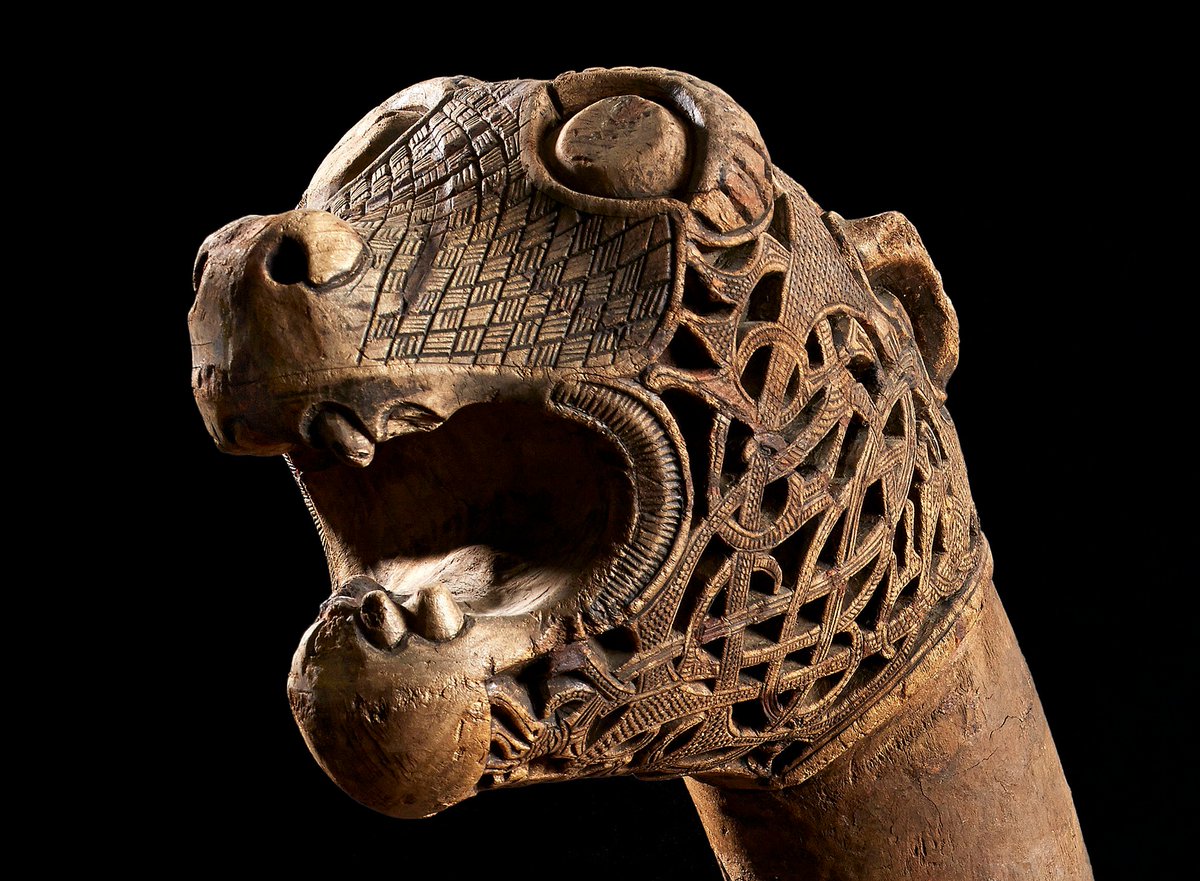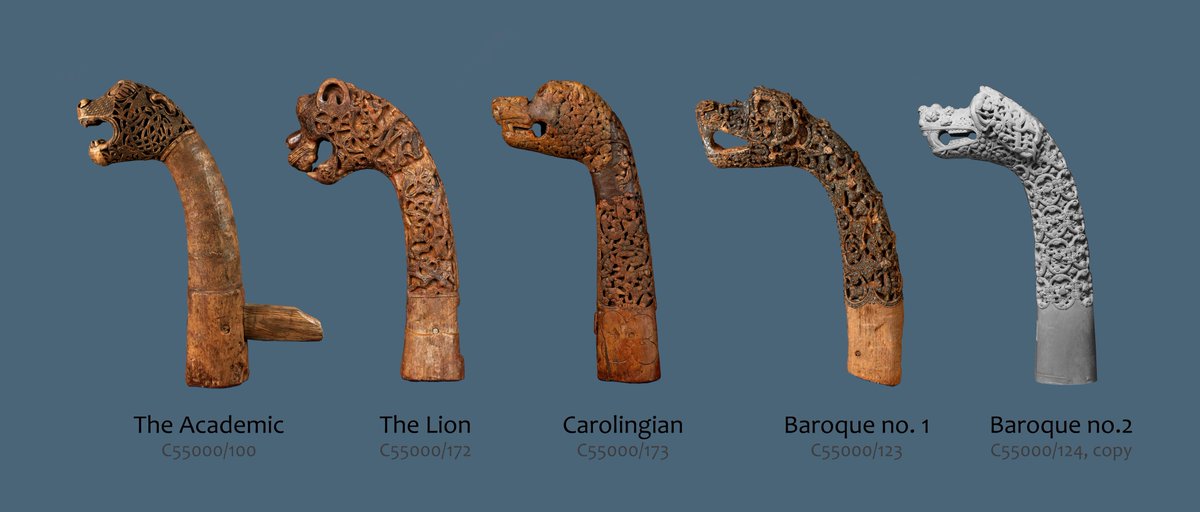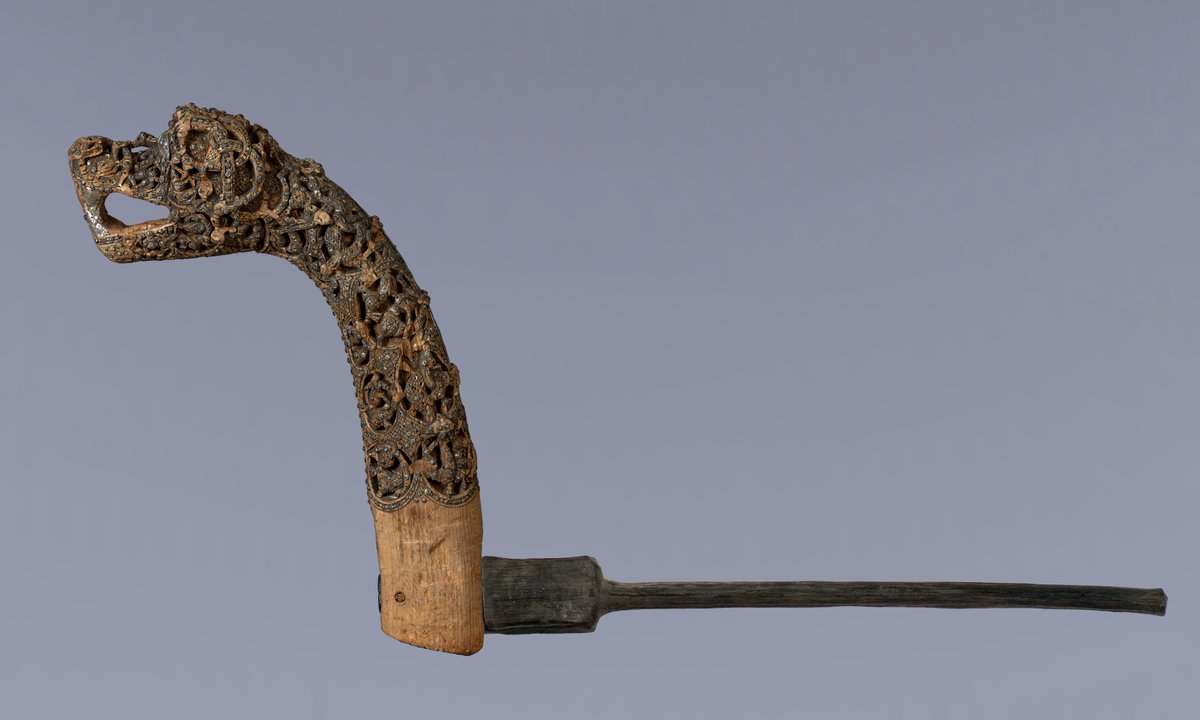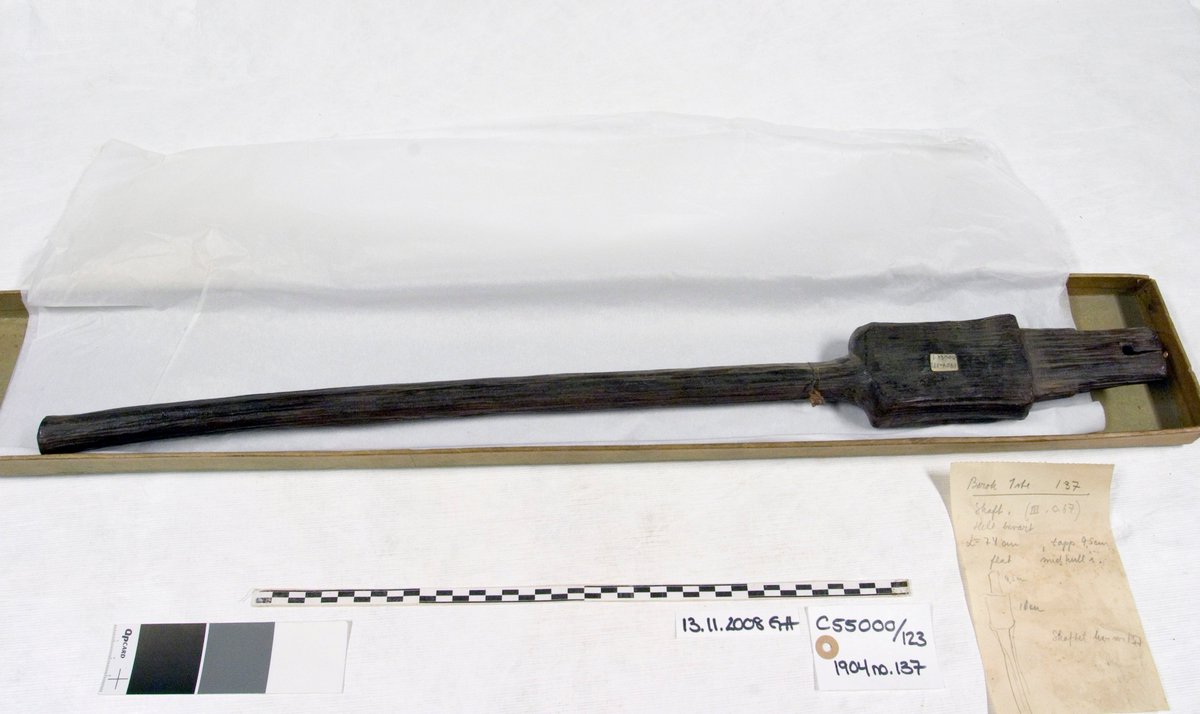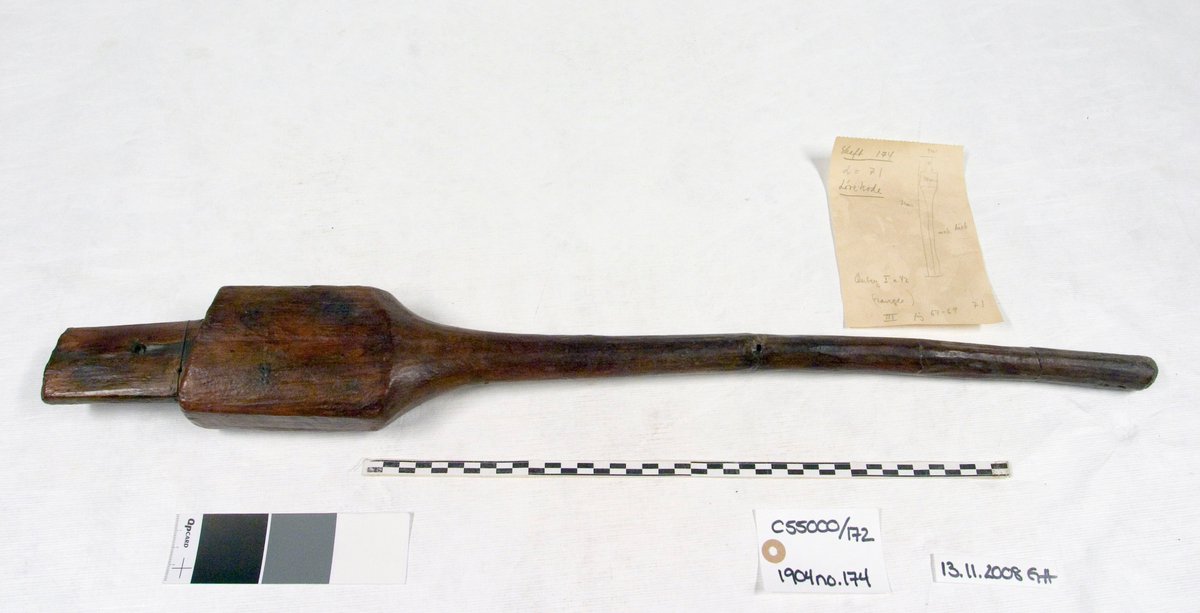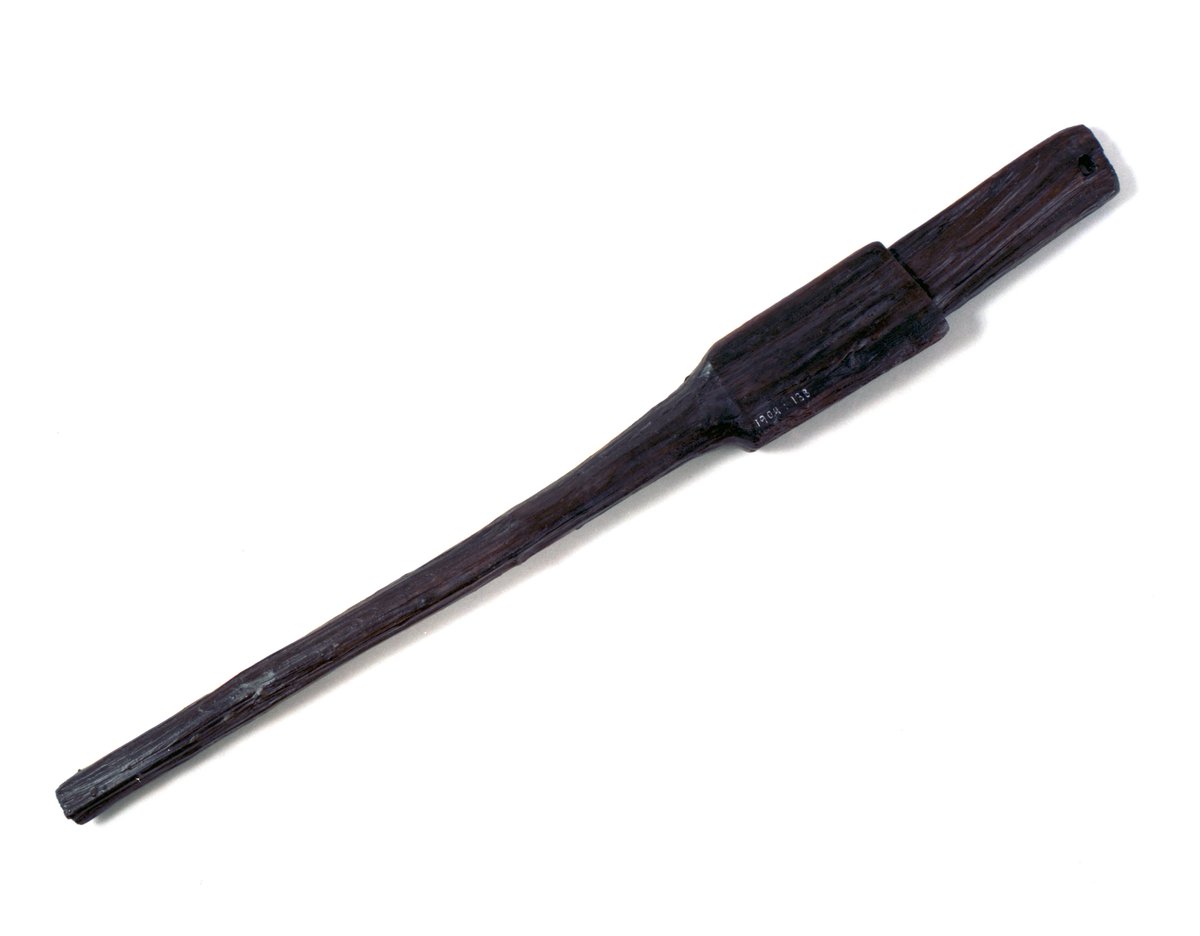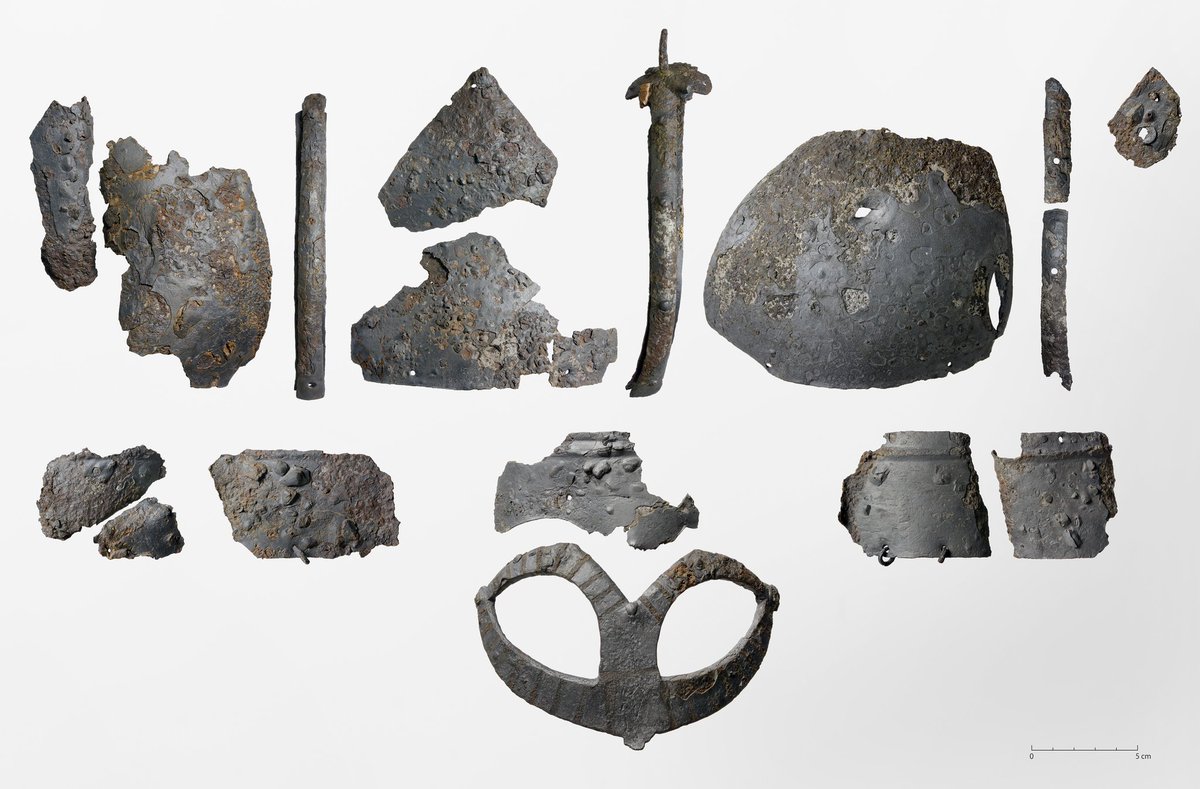
The beautifully ornamented axe from Mammen. Found in burial mound tree-ring dated 970-971AD. It's been presented a hundred times focusing on decoration. Let's nerd it out on misconceptions about its shape instead. Photo: Roberto Fortuna & Kira Ursem, National Museum, Denmark
1/5
1/5

This drawing is from a thorough publication about the Mammen axe and presents the misconseption of shape very clearly. This reconstruction of pointed lugs is ill-founded. Drawing: Orla Svensen, in publication by Ulf Näsman 1991.
2/5
2/5

Typologically the Mammen axe could possibly be defined as Jan Petersen type L, but it has a quite thin blade reminiscent of the broad axes (Jan Petersen type M) becoming populare towards the end of the 10th century. The edge is too short though to classify it as a broad axe.
4/5
4/5

A final note: The broad golden line decorating the transition between blade and haft hole area on the Mammen axe. When analysed it turned out to consist of copper and zink, thus it's brass and not gold.
5/5
5/5
The drawing is from 'Grav og økse: Mammen og den danske vikingetids våbengrave' by Ulf Näsman, pp. 163-180 in 'Mammen: grav, kunst og samfund i vikingetid', Jysk Arkæologisk Selskab, 1991.
• • •
Missing some Tweet in this thread? You can try to
force a refresh




